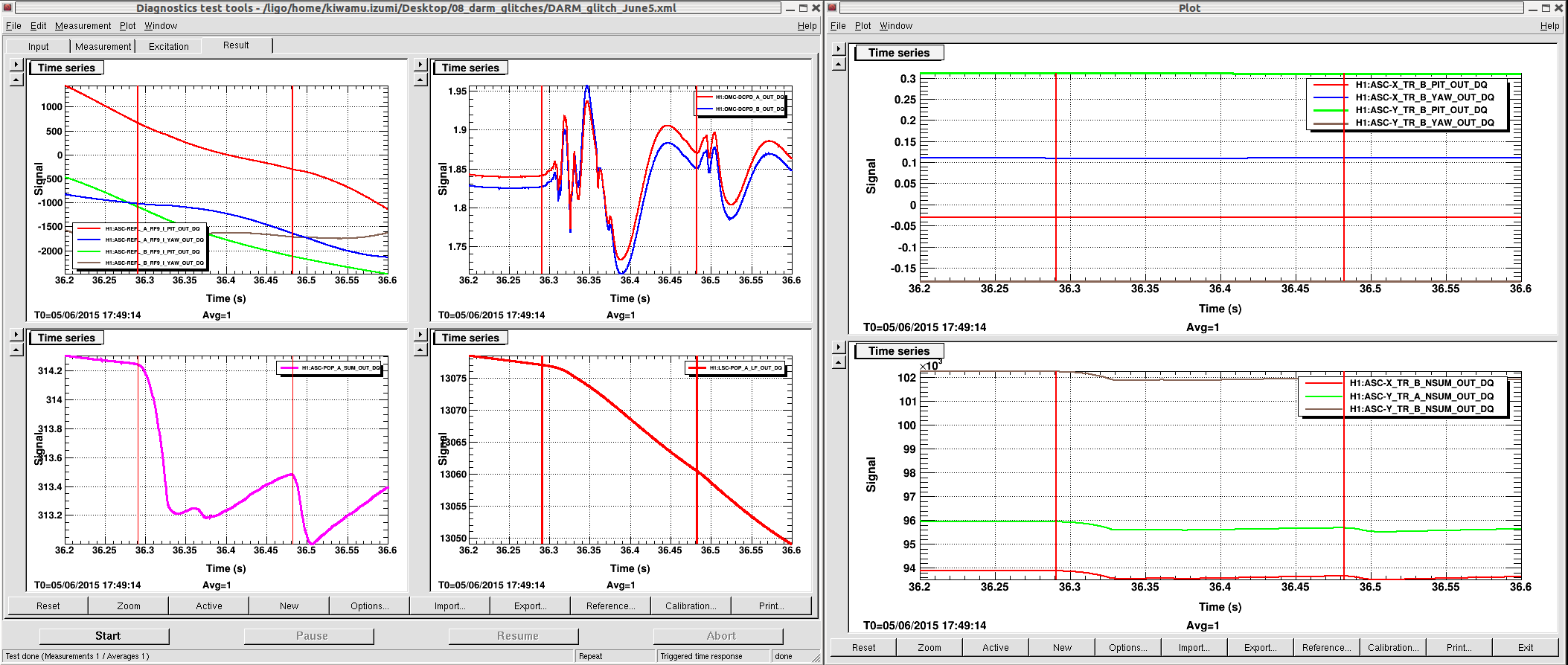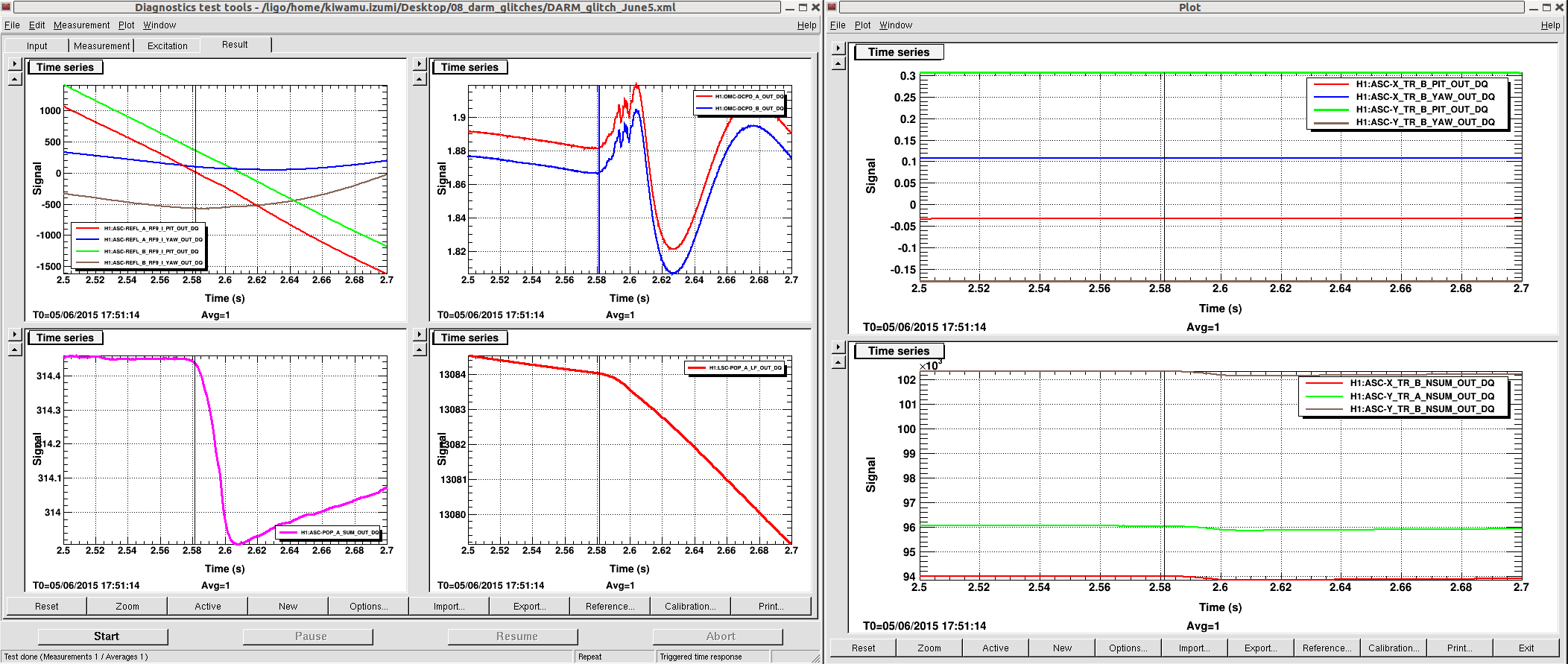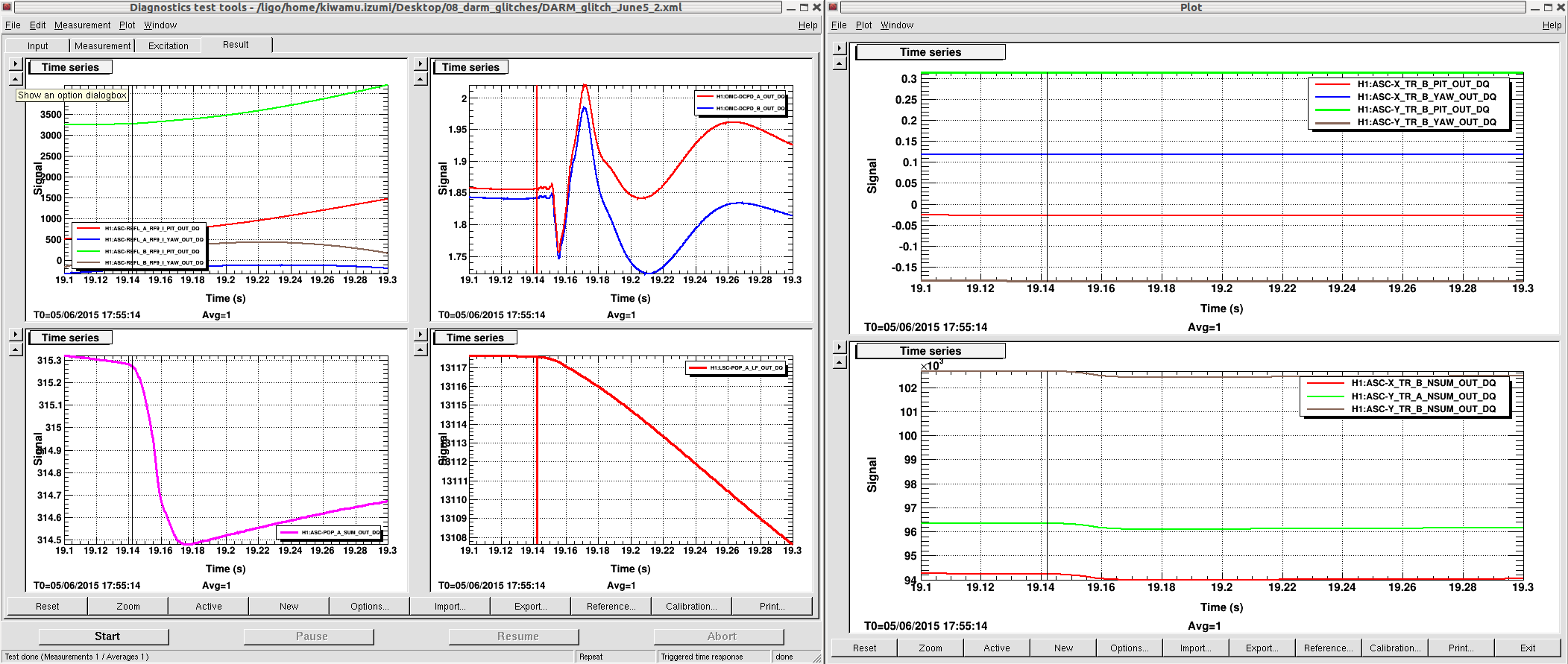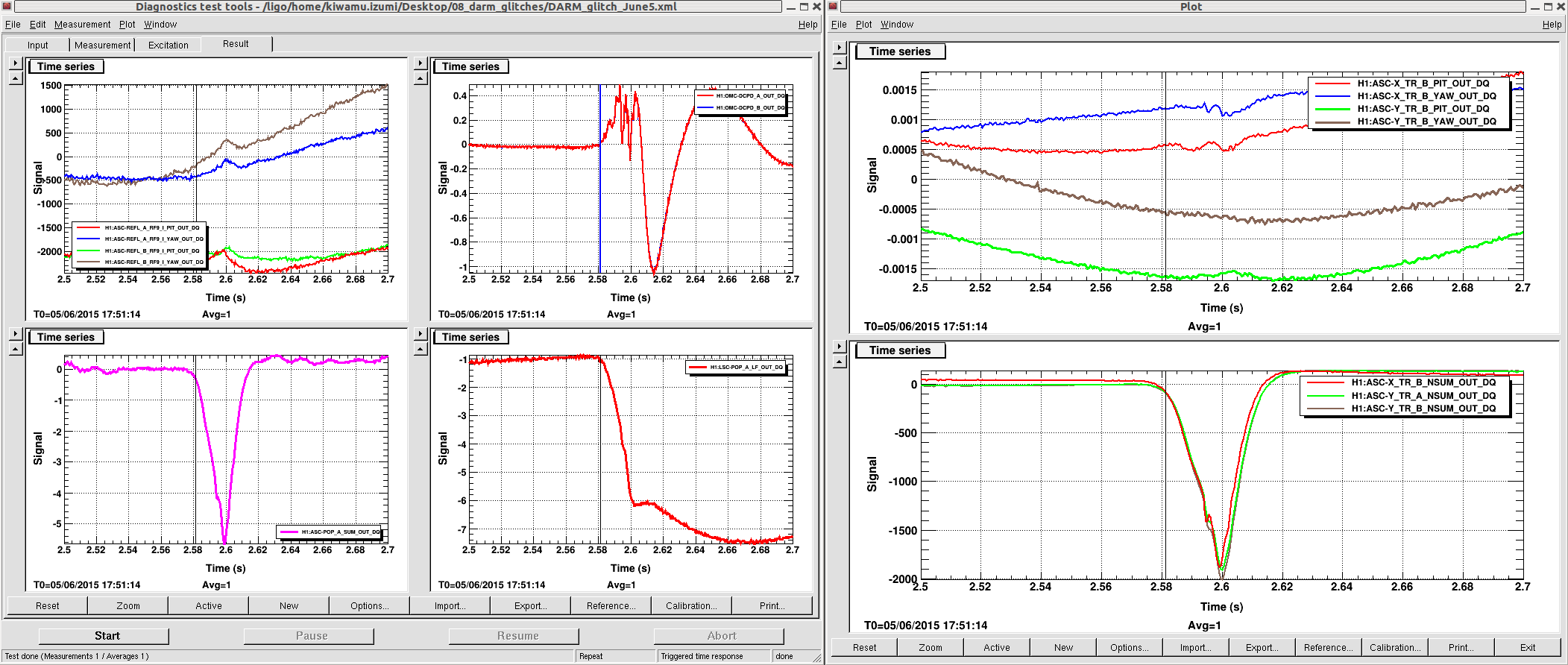Evan, Kiwamu, Stefan (WP 5252) We did a couple of tunings for 2 hours tonight during the time when LLO was down. This resulted in a inspiral range of 66 Mpc. (ASC SRC1 yaw) First, we tried powering up the PSL power from 17 W to 23 W to see what optics ran away. We confirmed that SRM was the one who ran away in yaw through the actuation of the ASC SRC1 loop as we went to 23 W. We searched for a signal which may represent this run-away motion of SRM. It seemed that the best choice was AS_A_36_I. Therefore we mixed this signal to the existing AS_B_36_I and AS_36_Q. Right now the SRC1 yaw signal is derived by -0.6 x ASA36I + 0.3 x ASA36Q + 0.3 ASB36I. So far it kept holding SRC without a run-away issue on a time scale of 2 hour. This change is already reflected in both ISC_LOCK and ISC_DRMI guardians. Attached is a plot with the AS 36 YAW error signals during the tuning phase and first 2h of stable locking at 23W. (AS36 whitening gain) When we were at 23 W, we noticed that a few rf segments of both AS_36_A and _B saturated. So we decided to decrease the whitening gain from 24 dB to 21 dB. As a compensation factor we put a gain of 1.4 in the signal conditioning digital filters (i.e. H1:ASC-AS_A(B)_RF36_I1(Q)_GAIN). In this way we avoided updating all the ASC loop gains associated with these signals. This seemed to be fine for the locking sequence as well. So we will leave them in this new whitening gain configuration. We updated the SDF accordingly. (Switching off ETMX ESD) Evan forced us to study the effect of the ETMX ESD bias. Evan will post a detailed alog later. We remotely switched off the ETMX ESD and saw an improvement in frequency range from 40 to 100 Hz by a few 10%. (Calibration correction with Pcal Y) At the beginning the range went above 70 Mpc and therefore we started checking the calibration. According to the Pcal Y line at 540 Hz, the optical gain was too low by 4% compared with the peak height from this morning -- this underestimated the displacement and hence too-high inspiral range. We then adjusted the optical gain in the OMC error path and now the Pcal line agrees with the one from this morning. So the calibration is good. (An accidental lockloss) At around 2015-06-06 3:21 UTC, we accidentally lost the lock due to a senior LIGO fellow mistakenly pressing a wrong button during the high power study. This was the only lockloss we had in the past 10 hours or so.
As for the EX ESD, during each lock we ramp down the bias on EX from 380 V to 0 V, after we've transitioned control of darm to EY.
We have not verified that this is in fact the optimal bias for minimizing the effect of the charge on EX; i.e., DAC noise and driver noise may still produce motion of the optic even if the applied bias voltage is 0 V.
Therefore, I spent 10 minutes tonight investigating this by trying a few different negative bias voltages with the IFO at 15 W. This didn't seem to really have an effect. However, inactivating the ESD driver did (see attachment).
At 24 W, the improvement is more noticeable. The attached png shows the comparison between tonight's spectrum and our previous best. The previous best was taken with the old EY ESD configuration, but we've seen over the past week that the new driver and the recalibration have not changed the shape or magnitude of the control noise, so the comparison is fair.
Also attached are some coherences with the new DARM spectrtum. We can see that SRCL has high coherence between 15 and 70 Hz (and also between 2 and 6 kHz... strange), and there is nonnegligible coherence with intensity from 100 to 400 Hz (this will probably be improved once Robert and Kiwamu continue their IMC WFS offset tuning).
If the EX driver does not come back on after lockloss and you cannot reset it using the EX ESD screen, then you toggle H1:ISC-EXTRA_X_BO_4 between 0 and 1 using caget.
66 Mpc!!! You guys caught L1! Very nice.






















